Diverse in content, publications of this issue expand the range of a retrospective analysis of the boundaries and possibilities of the Soviet state policy in the sphere of labour, and the reaction of society and individuals to the dogmas and principles of universality and obligation of labour contained in such a policy. The papers are placed in three sections reflecting the themes of the Soviet labour: etatisation of labour (general issues); labour as a socio-political resource of power; routinisation of work. In the first of them, the problems of the limits of monopolisation of the labour potential of the country's active population by the party state, the costs and results of the centralised management and control over population are posed and analysed. The second section includes papers in which the authors study various aspects of the practical implementation of the state labour policy, the core of which was the mechanisms for transforming the potential of various segments of the able-bodied population into a controlled socio-political resource of the party power. The third section is represented by the articles which reflect different aspects of everyday work, where the phenomenon of labour routinisation is visibly embodied (wages, material and living conditions of workers, organisation and management of labour processes at the level of individual production associations and enterprises, etc.).
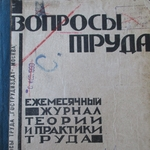 Etatization of Labor in Soviet Society (General Issues)
Etatization of Labor in Soviet Society (General Issues)
S.A. Krasilnikov
Managed Labor in Early Soviet Society: The Limits and Practices of Achievability
In the post-revolutionary period, the policy of the party state in the sphere of labor was carried out in accordance with non-linear dynamics (“one step forward – two steps back”). In 1922, the Code of Labor Laws (LCL), adopted in the second edition, fixed, seemingly forever, the mutually responsible rights and obligations of the employee and the employer, with the equality of the norms and principles of the Code for all existing economic structures based on employment. However, it took less than a decade to regenerate the technologies for establishing a state monopoly in the sphere of labor and absorbing non-state forms of economic life with the return of compulsory labor practices up to a wide and varied state coercion of workers to it. Settled in the early 1930s. The mobilization type of economy was accompanied by the actual destruction of both former regulators (the economic one in the form of the labor market and the state-legal one in the person of the Commissariat of Labor), the restoration of which took place only six decades later.
Publishing: 28/02/2023
How to cite: Krasilnikov S.A. Managed Labor in Early Soviet Society: The Limits and Practices of Achievability // Historical Courier, 2023, No. 1 (27), pp. 19–20. [Available online: http://istkurier.ru/data/2023/ISTKURIER-2023-1-01.pdf]
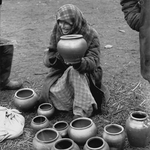 Etatization of Labor in Soviet Society (General Issues)
Etatization of Labor in Soviet Society (General Issues)
A.P. Kilin
Private Trade and Socialized Labour in the Mixed Economic Order Economy of the 1920s
The article examines the role of private entrepreneurship as an alternative sphere of employment for a significant mass of the population during the years of the NEP. Incentive mechanisms of citizens’ involvement in trade are considered, assessments of their activities by the merchants themselves are given. The emphasis is placed on the negative consequences that trade entailed, including disenfranchisement. The conclusion is made about the negative social dynamics or statics in the destinies of private entrepreneurs, which indicates the implementation of the mechanism of negative social selection, which went in parallel with the process of forming a new Soviet man. The elimination of mixed economic system, the unification and hybridisation of economic structures, the socialisation of not only material, but also labour resources, deprived private entrepreneurs of an economic basis. The author concludes that along with the fight against illegal forms of trade, the authorities objectively formed the prerequisites for its existence, since defects in the distribution system and chronic commodity shortages created a steady demand for products and services of the shadow economy and the black market.
Publishing: 28/02/2023
How to cite: Kilin A.P. Private Trade and Socialized Labour in the Mixed Economic Order Economy of the 1920s // Historical Courier, 2023, No. 1 (27), pp. 21–32. [Available online: http://istkurier.ru/data/2023/ISTKURIER-2023-1-02.pdf]
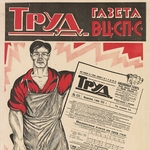 Etatization of Labor in Soviet Society (General Issues)
Etatization of Labor in Soviet Society (General Issues)
E.G. Vodichev
Labour, Property and Economic Freedoms in Concepts and Soviet Realities
The paper touches upon the key issues of economic theory such as the problems of ownership of the means of production and the product produced, labour and labour relations, as well as socio-economic inequality as presented in the research paradigm of the famous political economist Ya.A. Kronrod, which are also applied to the Soviet practices of etatisation. Relationships between these concepts are established. The reflection of the factor of etatisation in the "classical" model of Stalinist socialism, as well as the evolution of the role of this determinant in the conditions of Khrushchev's democratisation, are shown. It is concluded that the retained etatisation of property, production and labour relations, as well as etatisation of labour in general, in the face of new challenges in the transforming economy, gradually led to the collapse of the Soviet system.
Publishing: 28/02/2023
How to cite: Vodichev E.G. Labour, Property and Economic Freedoms in Concepts and Soviet Realities // Historical Courier, 2023, No. 1 (27), pp. 33–49. [Available online: http://istkurier.ru/data/2023/ISTKURIER-2023-1-03.pdf]
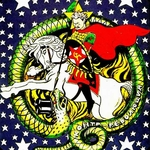 Etatization of Labor in Soviet Society (General Issues)
Etatization of Labor in Soviet Society (General Issues)
A.G. Teplyakov
Social Justice and Labor in the USSR: The Phenomena of Marginalization and Criminalization
The socialist system in the USSR demonstrates various practices of manipulating the principle of social justice, having come to a relatively stable socio-political system with signs of a paternalistic welfare state. The specific practice of the USSR period provides a lot of historical material, allowing you to highlight the problems of marginalization and criminalization of workers as a circumstance that turned out to be especially negative for maintaining the principles of social justice. The article examines the dynamics of changes in state policy towards citizens in order to manipulate them, as well as building a hierarchy that assigns power to the Communist Party and its subordinate structures. As a result of the ideologically motivated influence of the state, labor relations immediately acquired a deformed character, responding to the needs of the ruling elite in the marginalization of a significant part of society.
Publishing: 28/02/2023
How to cite: Teplyakov A.G. Social Justice and Labor in the USSR: The Phenomena of Marginalization and Criminalization // Historical Courier, 2023, No. 1 (27), pp. 50–64. [Available online: http://istkurier.ru/data/2023/ISTKURIER-2023-1-04.pdf]
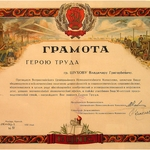 Labor as a Socio-Political Rresource of the Government
Labor as a Socio-Political Rresource of the Government
A.I. Savin
From the “Hero of Labour” to the “Hero of Socialist Labour”. The Moral Incentives of Labour Activity in Soviet Russia in the Early 1920s – First Half of the 1930s
The article analyzes the moral incentives as one of the main ways of non-economic motivation to work in Soviet Russia in the early 1920s – first half of 1930s. Based on archive sources, the author reconstructs the history of origin, use and transformation of the title “Hero of Labor” as a highest honorary title that was awarded to the Soviet workers in 1921–1938. The transition of national economy to a commercial economy in the years of the New Economic Policy has turned the labor heroism into an anachronism. As a result, the heroisation of labour and the development of the cult of heroes took place in the 1920s on an extremely modest scale.
Publishing: 28/02/2023
How to cite: Savin A.I. From the “Hero of Labour” to the “Hero of Socialist Labour”. The Moral Incentives of Labour Activity in Soviet Russia in the Early 1920s – First Half of the 1930s // Historical Courier, 2023, No. 1 (27), pp. 65–77. [Available online: http://istkurier.ru/data/2023/ISTKURIER-2023-1-05.pdf]
 Labor as a Socio-Political Rresource of the Government
Labor as a Socio-Political Rresource of the Government
A.A. Kozhaeva
Labor as a Basis for the Restoration of Rights and a Tool of Socialization in the Soviet Way (1926–1936) (Based on the Materials of Western Siberia)
Based on the analysis of petitions for the restoration of the rights of the “deprived” of Novosibirsk, as well as the Maslyaninsky and Iskitimsky districts of Western Siberia, the portrait of the “deprived” in the sphere of labor is reconstructed. The justification is given that labor was not only the basis for the restoration of rights, but also an important argument of the "deprived" to prove their loyalty to the authorities. It is revealed how selective discrimination affected the employment structure of the “deprived”. Groups of “deprived” are identified depending on the opportunities to overcome discrimination in the field of work.
Publishing: 28/02/2023
How to cite: Kozhaeva A.A. Labor as a Basis for the Restoration of Rights and a Tool of Socialization in the Soviet Way (1926–1936) (Based on the Materials of Western Siberia) // Historical Courier, 2023, No. 1 (27), pp. 78–89. [Available online: http://istkurier.ru/data/2023/ISTKURIER-2023-1-06.pdf]
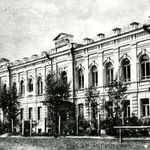 Labor as a Socio-Political Rresource of the Government
Labor as a Socio-Political Rresource of the Government
D.I. Petin
Dismissal of Ex-Officers during the Purges of Soviet Institutions 1928–1929 (On the Example of the District Financial Departments of Siberia)
The integration of representatives of the ex–officers into Soviet society became one of the reasons for the aggravation of social contradictions in the sphere of labor relations in the USSR. Conducting personnel purges, the Soviet bureaucracy by the end of the 1920s faced a difficult choice between "political distrust" in this category of specialists and their sometimes very high professional qualifications. This article is devoted to the scientific understanding of this discussion.
The study has been prepared with the support of the Russian Science Foundation, the project 22-28-20144 “White Officers in Soviet Omsk: Social Portrait and Adaptation Problem (November 1919–1927)”.
Publishing: 28/02/2023
How to cite: Petin D.I. Dismissal of Ex-Officers during the Purges of Soviet Institutions 1928–1929 (On the Example of the District Financial Departments of Siberia) // Historical Courier, 2023, No. 1 (27), pp. 90–104. [Available online: http://istkurier.ru/data/2023/ISTKURIER-2023-1-07.pdf]
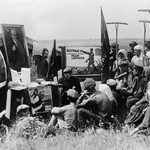 Labor as a Socio-Political Rresource of the Government
Labor as a Socio-Political Rresource of the Government
E.A. Ignat’eva
Activity in the Mobilization Regime: Agents of Power in the Siberian Village in 1929–1930
The article is devoted to the question of the activity of agents of power in the Siberian Village. In the paper functions and authority of agents of power, patterns of their relationship with the local population, efficiency of their activity in the Village, the problems in the work and their causes are established. The analysis of the activities of the grassroots management system allows to define important conclusions about the function of the Bolshevik power system generally.
Publishing: 28/02/2023
How to cite: Ignat’eva E.A. Activity in the Mobilization Regime: Agents of Power in the Siberian Village in 1929–1930 // Historical Courier, 2023, No. 1 (27), pp. 105–115. [Available online: http://istkurier.ru/data/2023/ISTKURIER-2023-1-08.pdf]
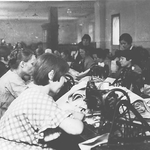 Labor as a Socio-Political Rresource of the Government
Labor as a Socio-Political Rresource of the Government
D.A. Mamontova
Representation of the Idea of Labor Re-Education of the Ccriminals in the Soviet Periodicals (Magazine “Ezhenedelnik Sovetskoy Yustitsii” and Paper “Sovetskaya Sibir’”) in 1922 and 1928
The paper is devoted to the study of the practice of the representation of the idea of labor re-education of the prisoners in periodicals of the 1920s for different segments of the population. The priorities of the authorities during a specific period had an effect on the ways of its representation. In 1922, this idea was promoted as an advantage of the Soviet penal system in comparison with pre-revolutionary and foreigns’. That allowed presenting the idea in a positive context. By 1928 it appeared that it was impossible to implement this idea because of the existing conditions in that sphere that led to the appearance of the critical assessments in the Soviet periodicals.
Publishing: 28/02/2023
How to cite: Mamontova D.A. Representation of the Idea of Labor Re-Education of the Ccriminals in the Soviet Periodicals (Magazine “Ezhenedelnik Sovetskoy Yustitsii” and Paper “Sovetskaya Sibir’”) in 1922 and 1928 // Historical Courier, 2023, No. 1 (27), pp. 116–128. [Available online: http://istkurier.ru/data/2023/ISTKURIER-2023-1-09.pdf]
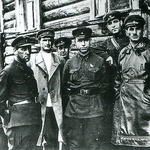 Labor as a Socio-Political Rresource of the Government
Labor as a Socio-Political Rresource of the Government
O.A. Belousova
The Struggle for Cadres in the Penal System of the Our Country in 1917–1941
The article deals with certain issues of personnel policy of the penal system of the USSR in the 1917–1941-ies: social benefits and guarantees, recruitment system, education. The materials of the Archive of the Federal Penitentiary Service of Russia for the Novosibirsk region and the Archive of the permanent exhibition on the history of the penitentiary system in memory of S.G. Marchenko of the Federal Penitentiary Service of Russia for the Kemerovo region – Kuzbass, including previously unpublished, were used.
Publishing: 28/02/2023
How to cite: Belousova O.A. The Struggle for Cadres in the Penal System of the Our Country in 1917–1941 // Historical Courier, 2023, No. 1 (27), pp. 129–140. [Available online: http://istkurier.ru/data/2023/ISTKURIER-2023-1-10.pdf]
 Labor as a Socio-Political Rresource of the Government
Labor as a Socio-Political Rresource of the Government
A.Yu. Belonogov
Senior Cadres of the Leningrad Party Organization in 1935–1940
The article analyses the staff of the Leningrad party organization in 1935–1940. The sample group includes approximately 50 senior party cadres, holding within this timeframe the positions of department heads and bureau members of the city party committee. By analyzing their personal characteristics the “collective portrait” of the leading Leningrad party worker was shown in its dynamics. The article evaluates and compares the mobility of the personnel of two types of senior staff party officials. The evaluation of their previous career advancement enables to find out the basic principles and recruitment criteria in the Leningrad city party committee and to define what social institutions can be regarded as primary recruitment sources. The article also clarifies to what extent such characteristics as professional and party experience as well as social background of the employees were being taken into consideration. Tracing the career advancement and further destiny of the party functionaries, the article defines to what extent the Leningrad party institutions were affected by political repressions and how active the leading regional party officials were in conducting the purges within their own ranks. Party employees that had the highest risk of falling victims of political repressions were also identified. The study concludes that the general trend of constant personnel replacement and rapid pace of cadre mobility did not lead to forming the regional Leningrad party elite.
Publishing: 28/02/2023
How to cite: Belonogov A.Yu. Senior Cadres of the Leningrad Party Organization in 1935–1940 // Historical Courier, 2023, No. 1 (27), pp. 141–153. [Available online: http://istkurier.ru/data/2023/ISTKURIER-2023-1-11.pdf]
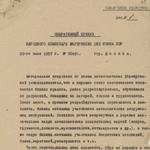 Labor as a Socio-Political Rresource of the Government
Labor as a Socio-Political Rresource of the Government
N.N. Ablazhey, A.S. Zhanbosinova
“To Protect the Working Soviet People …”: Workers as a Contingent of the USSR NKVD Order No. 00447 (On the Materials of Kazakhstan)
The paper is devoted to the study of social aspects of political repressions in the USSR. On the example of the largest punitive campaign of the Great Terror, the so-called Kulak Operation, carried out by Order of the NKVD of the USSR No. 00447, an attempt was made to analyze mass repression through a “social” or “collective” portrait of the victims. Kazakhstan was chosen as a region where modernization processes proceeded at a faster pace and had a pronounced industrial, albeit raw material industries, character. Forced labor was widely used in the Republic.
Publishing: 28/02/2023
How to cite: Ablazhey N.N., Zhanbosinova A.S. “To Protect the Working Soviet People …”: Workers as a Contingent of the USSR NKVD Order No. 00447 (On the Materials of Kazakhstan) // Historical Courier, 2023, No. 1 (27), pp. 154–166. [Available online: http://istkurier.ru/data/2023/ISTKURIER-2023-1-12.pdf]
 Labor as a Socio-Political Rresource of the Government
Labor as a Socio-Political Rresource of the Government
R.E. Romanov
Violators of the Decree of December 26, 1941 in the “Defense Industry” of Western Siberia in the Initial Period of the Great Patriotic War: People and Destinies
Fragments of the memorandum “On the issue of checking the Decree of the Government of 26/XII-1941”, the order of the People’s Commissariat of Ammunition of the USSR No. 0207/N dated September 10, 1942 and the information summary “On those convicted of desertion from military and coal industry enterprises by Decree of the Presidium of the Supreme Soviet of the USSR dated 12/26/41 for September-November 1942 by the military tribunals of the Siberian Military District”, identified in the funds of the State Archive of the Novosibirsk region. The content of extracts from these documents is of key importance for understanding the typology of violators of the decree of December 26, 1941 for the reasons and consequences of official misconduct.
Publishing: 28/02/2023
How to cite: Romanov R.E. Violators of the Decree of December 26, 1941 in the “Defense Industry” of Western Siberia in the Initial Period of the Great Patriotic War: People and Destinies // Historical Courier, 2023, No. 1 (27), pp. 167–177. [Available online: http://istkurier.ru/data/2023/ISTKURIER-2023-1-13.pdf]
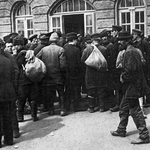 The routine of Labor
The routine of Labor
N.A. Potapova
State Regulation of Otkhodnichestvo in the 1920s (On the Materials of Siberia)
The article attempts to analyze the activities of the Soviet government in the regulation of peasant seasonal crafts in the 1920s. This whole period was marked by the transformation of this phenomenon. This happened against the background of the fight against mass unemployment. And the transformation of otkhodnichestvo into a process regulated by the state was considered as one of the ways to reduce the number of unemployed population. By the end of the 1920s the Bolsheviks almost completely succeeded in eliminating the free movement of peasants from the countryside to work.
Publishing: 28/02/2023
How to cite: Potapova N.A. State Regulation of Otkhodnichestvo in the 1920s (On the Materials of Siberia) // Historical Courier, 2023, No. 1 (27), pp. 178–185. [Available online: http://istkurier.ru/data/2023/ISTKURIER-2023-1-14.pdf]
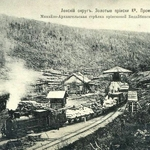 The routine of Labor
The routine of Labor
V.G. Zelyak
Gold-Mining Offices of Siberia in 1923–1925: Main Results of Activity
The main purpose of the article is to analyze the activities of four gold-mining offices in Siberia for the entire period of their existence (1923–1925), to determine their role and significance in Siberian gold mining. The relevance of the research is determined by the fact that significant gaps in the historiography of the industrial development of Siberia of the 1920s are filled, the experience of organizational work and the main results of the activities of small-scale gold industry units in the conditions of the new economic policy are studied. The author used historical-genetic, historical-comparative, concrete-historical methods. The methodological basis of the research is a region-oriented approach developed within the framework of modernization theory. In the course of the study, it was established that the Altai, Irkutsk, Krasnoyarsk and Tomsk gold-mining offices were organized by the Siberian authorities under the general leadership of Sibprombyuro to involve a huge mass of remote mines in the operation.
Publishing: 28/02/2023
How to cite: Zelyak V.G. Gold-Mining Offices of Siberia in 1923–1925: Main Results of Activity // Historical Courier, 2023, No. 1 (27), pp. 186–196. [Available online: http://istkurier.ru/data/2023/ISTKURIER-2023-1-15.pdf]
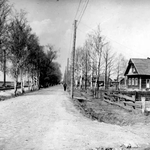 The routine of Labor
The routine of Labor
V.A. Lomanov
Features of the Functioning of German Collective Farms in the North-West of the RSFSR in the 1930s
The subject of this publication is the German collective farms of the North-West of the RSFSR in the 1930s, the features of their functioning are identified and characterized, as well as the factors that influenced this process. In the course of carrying out their economic activities, German collective farms faced a whole complex of obstacles of a personnel, organizational, resource and financial nature, which undermined their economic productivity and contributed to a decrease in the level of material well-being of German peasants who were in the aforementioned agricultural organizations, encouraging them to engage in side earnings or leave the collective farms. Throughout the 1930s. German collective farms were able to eliminate the existing problems and become advanced agricultural enterprises not only within the North-West, but also on an all-Union scale.
Publishing: 28/02/2023
How to cite: Lomanov V.A. Features of the Functioning of German Collective Farms in the North-West of the RSFSR in the 1930s // Historical Courier, 2023, No. 1 (27), pp. 197–207. [Available online: http://istkurier.ru/data/2023/ISTKURIER-2023-1-16.pdf]
 The routine of Labor
The routine of Labor
D.L. Ostrovkin, M.V. Popov
Health Care and Sanitary-Epidemic State of the Ural Village in the 1920–1930s
The article is devoted to one of the key aspects of village life in the 1920s–1930s – the development of medicine and the sanitary situation of the peasantry. Researchers prove that during this period a state system of health care and medical and sanitary services for the peasantry was created, which directly affected the life and life in the village, as a result of which the medical base expanded in the Ural region, smallpox epidemics became a thing of the past, outbreaks of typhus were significantly reduced, the population mastered the elementary rules of consumer services.
Publishing: 28/02/2023
How to cite: Ostrovkin D.L., Popov M.V. Health Care and Sanitary-Epidemic State of the Ural Village in the 1920–1930s // Historical Courier, 2023, No. 1 (27), pp. 208–219. [Available online: http://istkurier.ru/data/2023/ISTKURIER-2023-1-17.pdf]
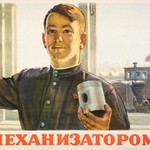 The routine of Labor
The routine of Labor
V.B. Laperdin
Remuneration of MTS Workers in the West Siberian Region in the 1930s
The article analyzes the system of remuneration of workers and employees of machine and tractor stations in the 1930s. MTS maintained two different wage systems: one for employees and full–time employees of the stations, the other for collective farm workers. The change in the system of remuneration of workers shows that the state, faced with the problem of high turnover of personnel in MTS, was forced to partially meet the requirements of machine operators and improve their material maintenance. This increased the level of adaptation of peasant youth to the socio-economic conditions of the collective farm system.
Publishing: 28/02/2023
How to cite: Laperdin V.B. Remuneration of MTS Workers in the West Siberian Region in the 1930s // Historical Courier, 2023, No. 1 (27), pp. 220–229. [Available online: http://istkurier.ru/data/2023/ISTKURIER-2023-1-18.pdf]
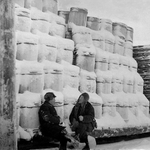 The routine of Labor
The routine of Labor
O.V. Ryabkova
Salekhard Forestry Plant: Achievements and Development Problems during the Great Patriotic War
The article discusses the results of the analysis of archival materials deposited in the State Archive of the Yamalo-Nenets Autonomous Okrug in the archive fund No. 39 Salekhard Forestry Plant of the Siberian Forestry Trust (Siblesrybprom). The publication shows the role and identified the problems of the functioning of the Salekhard Forestry Plant in 1941-1945, which was the main producer of packaging and salting containers (barrels and vats) for enterprises of the leading branch of the economy of the Yamalo-Nenets National District during the war – the fishing industry.
Publishing: 28/02/2023
How to cite: Ryabkova O.V. Salekhard Forestry Plant: Achievements and Development Problems during the Great Patriotic War // Historical Courier, 2023, No. 1 (27), pp. 230–239. [Available online: http://istkurier.ru/data/2023/ISTKURIER-2023-1-19.pdf]
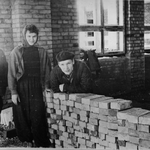 The routine of Labor
The routine of Labor
V.A. Vybornova
“Building Communism” at Novosibirsk State University as a Response to the Resolution of the XXII Congress of the CPSU
In October 1961, the XXII Party Congress became the most significant event of the year for the country. Khrushchev's loud speech about the approaching life "under communism" and the emphasized important role of science in this event activated a new round of the ideological campaign of the USSR, which entailed the need to adopt "social obligations" in universities and research centers. The article considers the "socialist obligations" prescribed by Novosibirsk State University as a tool of a mobilization nature. The strategy of the NSU leaders to include supranormative work in the system was based on a dual approach: the actors were entrusted with the organization of the structure of the new university, students and the Komsomol part of the teaching staff – routine for the established Soviet system, physical and ideological and educational work. Stable and high–quality performance of public works made it possible to enlist the support of party organizations to fulfill the first task – to defend the right to originality of scientific research.
Publishing: 28/02/2023
How to cite: Vybornova V.A. “Building Communism” at Novosibirsk State University as a Response to the Resolution of the XXII Congress of the CPSU // Historical Courier, 2023, No. 1 (27), pp. 240–250. [Available online: http://istkurier.ru/data/2023/ISTKURIER-2023-1-20.pdf]



